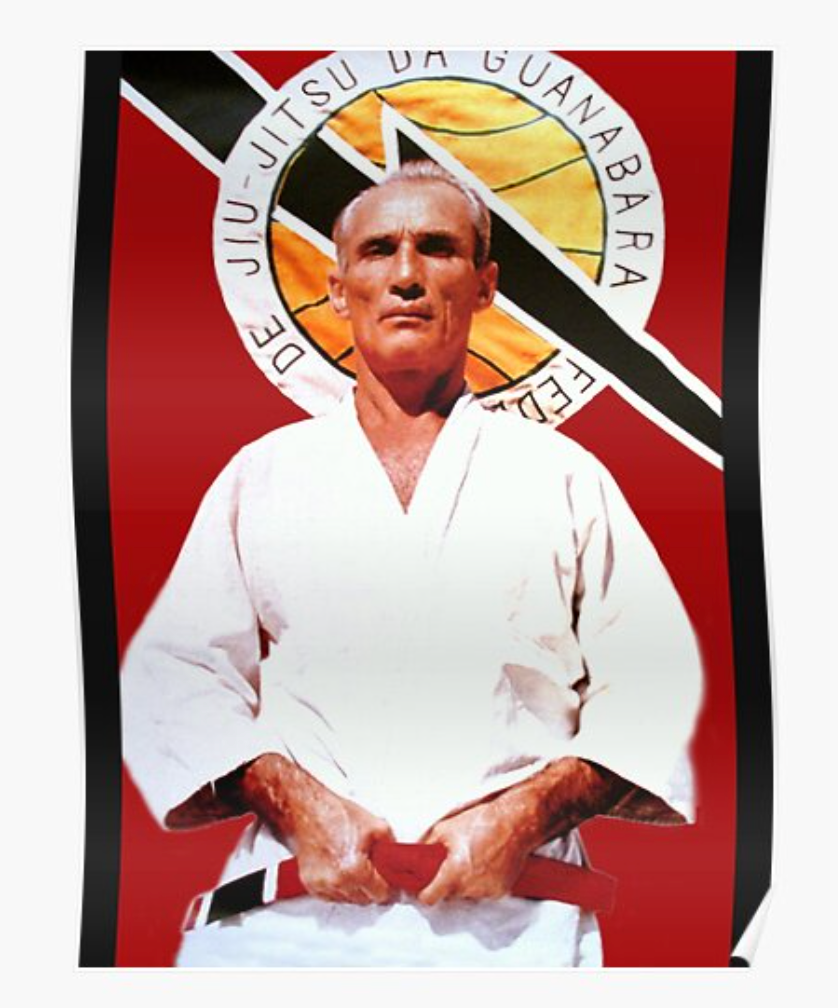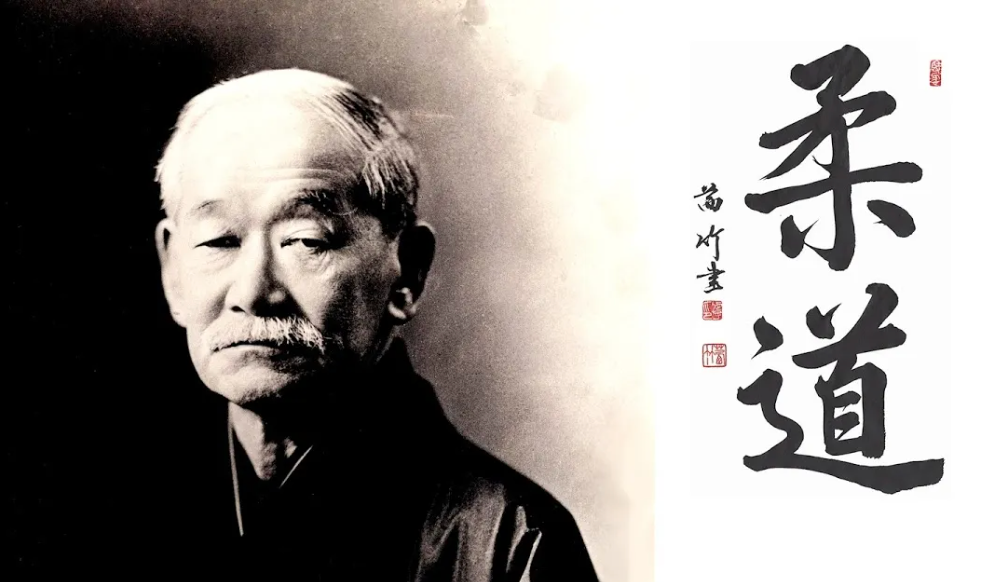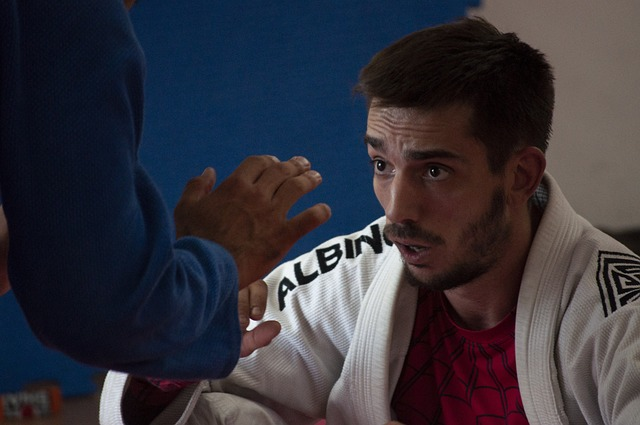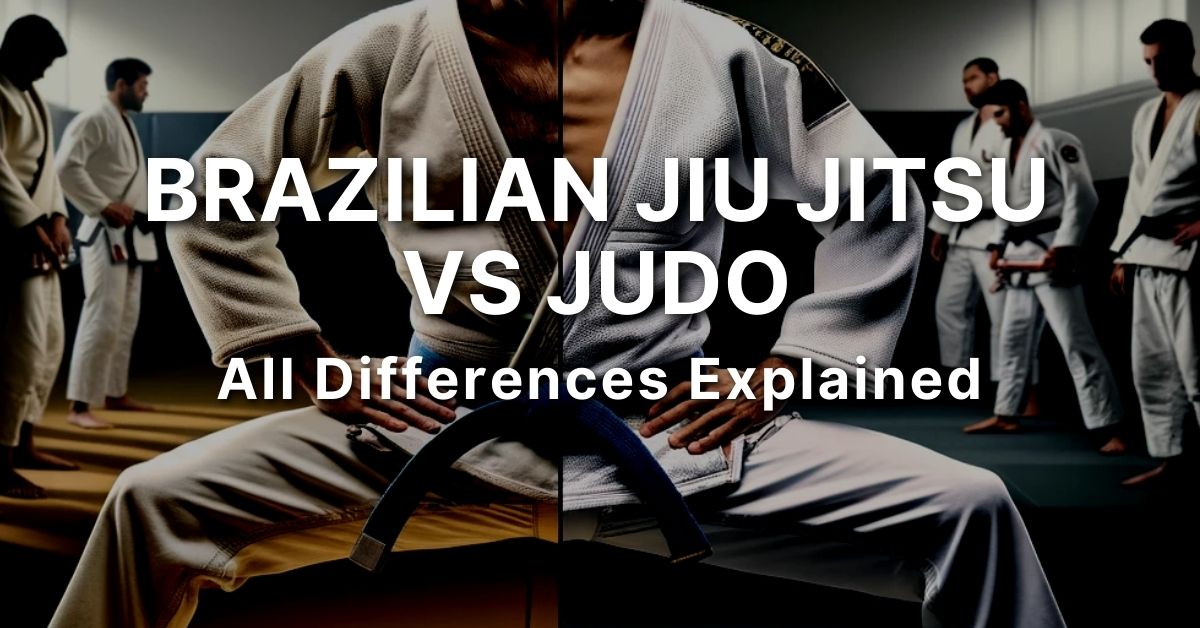Judo Vs BJJ
Both Judo and BJJ are both popular forms of martial arts that have been around for decades. While they share some similarities, they also have many critical differences.
Here is an overview of the main points that distinguish BJJ from Judo and delve into why it matters.
The Goal
The main goal in both BJJ and Judo is to gain a dominant position where the opponent can be controlled or pinned so submission techniques can be applied if desired.
The method for achieving this varies greatly between BJJ and Judo.
In BJJ, practitioners rely heavily on ground techniques such as joint locks, chokes, or other submissions to dominate their opponents without striking or kicking them.
Within the framework of practice at most academies, use of brute strength is discouraged in favor of skill-based techniques over strength-based implementations.
Judo, on the other hand, focuses almost exclusively on techniques that involve throwing your opponent off balance using momentum plus careful technique to maximize their vulnerability when thrown.
Just as in BJJ there must still be sufficient control to apply a pin or submission – however it’s often achieved by manipulating your opponent’s counterbalance rather than joint locks or chokes.
Ultimately, in Judo the goal is generally not submission but rather throw your opponent with maximum efficiency which takes skill and precision far more than strength.

History of Brazilian Jiu Jitsu and Judo
BJJ and Judo have both been around for a long time. The two martial arts originated in Japan, with Judo having its roots in the early 1800s, while Brazilian Jiu Jitsu was developed in the early 1900s.
The two martial arts have some similarities, but they also have some significant differences that make them two distinct martial arts styles.
Let’s delve into the history of Brazilian Jiu Jitsu and Judo and take a closer look at the differences between them.

Origins of Brazilian Jiu Jitsu
BJJ is a martial art and combat sport that focuses on grappling and ground fighting. It was derived from Kodokan Judo, which was developed by Jigoro Kano in Japan in the late nineteenth century.
However, many of the techniques used in modern Brazilian Jiu Jitsu were created by Mitsuyo Maeda and refined by his student Carlos Gracie, along Helio Gracie and Royce Gracie further developing the gentle art of BJJ.
BJJ is considered to be one of the most effective forms of self defense available today and has been adopted by numerous military and law enforcement agencies around the world.
It is also popular with recreational practitioners who enjoy testing themselves in Jiu Jitsu tournaments against other opponents.
The philosophy behind Brazilian Jiu Jitsu is to use technique rather than size or strength to overcome a larger or more powerful opponent.
This is accomplished by using leverage and proper body positioning to control an opponent on the ground for an eventual submission or escape if necessary.
In addition, BJJ focuses heavily on defensive techniques, such as:
- avoiding strikes from an opponent
- attempting to take an advantageous position on the ground
- applying submissions such as joint locks or chokes
As a result, practitioners of BJJ are well-prepared for a self defense situation both on their feet and on the ground should it become necessary to bring an altercation there.

Origins of Judo
Judo’s origin story dates back to the 1880s in Japan, when a teacher by the name of Jigoro Kano developed it.
He combined elements from two existing martial arts: Jujutsu (also known as Jiu-Jitsu) and Kano jiu-jitsu. Since then, Judo has been adopted worldwide as a recreational activity and an Olympic sport, and is also used for self-defense.
Judo is a martial art that focuses on throws and grappling techniques, standing submissions such as joint locks (Kansetsu Waza), and chokes/strangulations (Shime Waza).
It involves minimal kicking and punching; submissions are made by forcing the opponent into submission with joint locks or chokes. It also emphasizes timing, strategy, balance, control, flexibility and stamina in response to the opponent’s movements.
At its core, Judo consists of two main sections:
- Nage no Kata (various throwing techniques) run through in conjunction with Katame no Kata (“formal exercises of grappling techniques”).
- Randori (free practice sparring) sessions which allow participants to learn and practice their skills with resistance rather than just against an immobile partner.
Strangulations or choking techniques were included in some forms of Judo until recently when they were separated from judo in order to make the sport friendly for use in various tournaments across the world where choking was excluded.

Rules and Regulations
Both Brazilian Jiu Jitsu and Judo are martial arts that share many similarities in their techniques, yet they have some distinct differences in both rules and regulations.
Judo is a stand-up grappling sport that follows the rules of International Judo Federation (IJF), while BJJ matches focus on ground grappling and follow the BJJ competition rules of the International Brazilian Jiu-Jitsu Federation (IBJJF) as well as BJJ belt system which signifies a BJJ practitioner’s technical knowledge.
In this section, we will explore the differences between the two sports in terms of rules and regulations:
Rules of Brazilian Jiu Jitsu
Brazilian Jiu Jitsu is regulated by a set of rules designed to ensure fairness, safety and competitive balance. These rules have been developed over the years to align with the changing techniques used in the sport.
The major rules for all Brazilian Jiu Jitsu matches are:
- No striking or kicking is allowed. All techniques must be performed using control and leverage on joint manipulation, holds, and chokes.
- Reversal of positions (turtle guard, side guard, knee shield etc…) is forbidden in Brown Belt level divisions and up. In lower belt divisions (white and blue), reversals are allowed but must be done in a controlled manner.
- Time limits are imposed depending on the division, but a match will typically last 4 – 5 minutes for adults at most levels of competition.
- Submissions must be tapped out 3 times before they count as an official submission on the scorecard. A submission can also be verbally acknowledged as well. Referees may also immediately stop a match if they feel that one participant is unable to defend them self or if they see something dangerous happening during a match.
- In Brown Belt division and higher, only submissions by means of choke holds or joint manipulations are allowed while in other divisions submissions may include leg locks as well without involving heel hooks or toe holds which can cause serious casualties if done wrong or forced too hard beyond allowable angle/pressure limits set by IBJJF standards;
- A scorecard is used to track points such as takedowns and reversals throughout the match with awards for both submissions attempts performed within technical regulation. Points accumulated will determine who wins the match – either via decision (total points) or submission (instant win).
Rules of Judo
Judo is an Olympic sport based on the ancient Japanese martial art of “jujutsu” or “jiu jitsu“.
The goal of judo is to throw your opponent to the ground using technique and leverage.
Judo is known for its included emphasis on safety and respect. There are a set of specific rules that govern the practice of judo which must be observed in order to ensure safety.
Judo Competition Rules: A judo match consists of three minutes for each athlete, and can be extended with two ‘Golden Score’ overtime periods.
Points are awarded for a successful throw, hold down, pin, or submission technique, as well as an ‘Ippon’, an immediate win if no score has been obtained after three minutes.
Foot sweeps and trips are also considered valid techniques which can result in victory. An immediate halt to the match should occur if any physical contact results in severe injury (such as a broken bone), or if the referee feels it necessary.
Competition Outfit: Judo requires athletes to wear traditional ‘judogi’ or uniform; consisting of shorts, trousers, socks and a jacket both for men and women’s divisions – all white for juniors but with blue sleeved color distinction for seniors.
A non-white uniform is allowed as long as only blue sleeves appear at senior competitions depending on who initiated it first during combat control period.
According to the judo belt system, all athletes must wear belts (white belt to black) which signify ranking within their skill level from beginner to expert respectively along with standardized protective equipment such as:
- Mouth guards
- Groin guards (for male competitors)
- Headgear guard
- Chest protector
Techniques
Brazilian Jiu Jitsu and Judo are both martial arts styles that many people practice for self defense.
What makes them different are the techniques used in each style. In terms of techniques, BJJ is mainly focused on ground fighting, while Judo focuses on throws and joint locks.
Let’s take a closer look at the techniques used in each style:

BJJ Techniques
BJJ is a sport and self-defense fighting style that utilizes throws, joint locks, chokes, and other grappling techniques to control one’s opponent.
Due to appearances in various Mixed Martial Arts (MMA) competitions, BJJ has morphed into its own category of MMA Jiu Jitsu developed in various BJJ schools.
The techniques utilized in BJJ include:
- Sweeps which can be used from the guard position to off-balance your opponent, allowing you to transition into another position such as side control or mount positions.
- Guard passes which involve taking away your opponent’s guard positions such as half-guard or full-guard by pushing them off balance or preventing their legs from getting a good grip on yours.
- Submissions which are attempts to finish a fight quickly; examples of these include triangle chokes, armbars and rear-naked chokes.
- Takedowns and reversals which involve throwing an opponent off balance so you can gain dominant ground positions such as mount or back control.
These techniques are often applied gradually until the desired result is achieved; this allows practitioners of BJJ to use minimal force when necessary while controlling their opponents on the ground instead of striking them repeatedly which can cause injury when done incorrectly.
With proper technique, practitioners can also avoid having their own limbs exposed during grappling exchanges which provides effective protection against certain submission holds as well as preventing unnecessary damage during training sessions with a partner who underestimates their strength and speed.

Techniques of Judo
Judo is a modern fighting style, combat and Olympic sport created in Japan in 1882 by Jigoro Kano.
Its most prominent feature is its competitive element, where the objective is to either throw or takedown an opponent to the ground, immobilize or otherwise subdue them with a pin, or force them to submit with a joint lock or choke.
Judo practitioners train both physically and mentally in order to groom their technique skills as well as their character under the basic principles of judo etiquette.
Techniques used in Judo include holds, locks and throws. Essentially, any judo throw is considered a takedown.
These techniques involve trapping your opponent’s arms and legs from both standing position and on the ground. When you learn judo, you will discover the following techniques :
- Tai-otoshi (body drop): Technique involves grabbing one arm of your opponent with one hand while using your other hand to drive them down onto the mat.
- Uchimata (inner thigh throw): Technique involves sweeping on leg behind your opponents hip while pushing them forward until they lose balance and go flying over you.
- Seoi nage (shoulder throw): Technique consists of pushing into your opponents shoulder while you drop under them so they end up thrown up onto their back on the floor.
- Koshi guruma (hip wheel): Technique involves twisting your hips side to side while lifting your opponent up off their feet into the air before driving them backwards onto the mat.
Scoring System
When it comes to scoring in Brazilian Jiu Jitsu and Judo, there are some key differences. In Judo, points are awarded for throws, holds, and submissions.
Whereas in BJJ, only submissions count for points. Also, Judo matches can be won by decision or by “ippon” which is a full point. In BJJ on the other hand, matches can only be won by submission.
Let’s talk more about how scoring works in both martial arts:
Scoring of Brazilian Jiu Jitsu
BJJ utilizes a scoring system that is slightly different than the traditional Japanese judo scoring system.
While both sports utilize points for specific techniques, submission holds, as well as maintaining a dominant position over an opponent, BJJ focuses heavily on ground control, with points awarded for submission holds and guard retention.
This can lead to a much slower pace competition than Judo because there is more to be gained from ground control rather than standing throws and throws from various guard positions.
In BJJ the following are scored:
- Takedowns: A takedown includes any move that results in the opponent going from a standing position onto their back with their opponent having control. Each takedown grants 2 points.
- Guard passes: Passing guard is considered one of the most important elements in jiu jitsu because it allows an attacker access to far more attack opportunities that remain concealed while one’s opponent remains in closed or open guard positions. Each successful guard pass grants 3 points.
- Knee on stomach position: The knee on stomach/mount requires maintaining dominant on of an opponents torso by utilizing pressure from your knees against your opponents side as well as pressure from your hands/arms against their chest area or neck for extended periods of time using either static pressure or dynamic transitions; this creates tremendous opportunities for dominating and submitting an opponent if they lack knowledge of escape routes out of this seemingly hopelessly controlling position (aka “pins”). Each 2 minute period of achieving Knee On Stomach grants 2 Points.
- Mounted Position: Mounting your opponent while they remain curled up in a protective ball grants 3 Points per mounted position achieved per round with no refinements necessary (i.e no hooks/advantage point needed). Wins due to this single criterion can sometimes happen in competition if long enough periods are maintained where one fighter is unable to escape or reverse their opponents mounted control due to fatigue; Escape routes must be continually monitored during such scenarios however as even small ‘windows’ can allow for unexpected reversals which may turn what was once a dominating advantage into great disadvantage within seconds (reversal & turnarounds).
- Submissions: Finishing “taps” due to various locks (namely Arm bars & Chokes) are highly valued method’s of victory & receive immediate recognition with finals matches often ending via pure submission grips applied dextrously by all fighters involved at sometime during their respective matches; each tap out signals an automatic win unless otherwise noted by tournament rules until final bell rings).
Scoring of Judo
Scoring in judo is an essential part of the sport, and needed to determine who wins a match. The primary purpose of judo scoring is to reward competitors’ positive efforts during the match. The ultimate goal is to make contact with your opponent, and to demonstrate superior techniques while competing. Judo scoring has advanced significantly over time and can be quite detailed – so let’s take a look at how it works!
There are three main methods by which a competitor can score points in Judo: Waza-ari (half point), Yuko (quarter point), and Ippon (full point). In order for either competitor to win the match, one of them must accumulate more than half of the maximum possible score with both types of points.
The Waza-ari value is awarded when a judoka makes contact with their opponent with an advanced technique such as throws, arm bars, and various other holds. This means that they are able to create or maintain control over their opponent during the exchange and execute superior technique – leading them towards reaching Ippon, which is full contact between opponents and/or submission holds like choke hold or arm bar.
The Yuko value is awarded when a judoka executes lesser techniques such as leg sweeps. Lastly, Ippon, although it often results in victorious techniques such as throws or pins will also result from submissions that are considered dangerous if continued—such as Eri-Jime or Kata-Gatame shoulder locks.
Alongside these three primary scoring methods there are also some additional methods of scoring including Shido penalties for things like stalling/preventing action from taking place in addition to warnings for stepping outside of the bounds prescribed by the referee/judge for any particular bout/competition format being used at that event or tournament.
Conclusion – Brazilian Jiu Jitsu vs Judo
Ultimately, which martial art is best for you depends on your goals.
Brazilian Jiu-Jitsu and Judo both have their strengths and weaknesses, but ultimately you will find that either one can help to improve your physical fitness, self-defense skills, and confidence.
Judo focuses more on getting the opponent off their feet and maintaining control through throws and pins in order to gain a submission.
On the other hand, BJJ revolves around ground fighting techniques in order to gain control through various locks, chokes, and holds. Because BJJ techniques are so effective at creating an immediate advantage, it often makes it the preferred choice among MMA fighters.
No matter which art you choose to practice or explore further – whether Brazilian Jiu Jitsu or Judo – you’ll be sure to benefit from increased confidence in physical abilities as well as an overall improvement in self-defense skills.


0 Comments